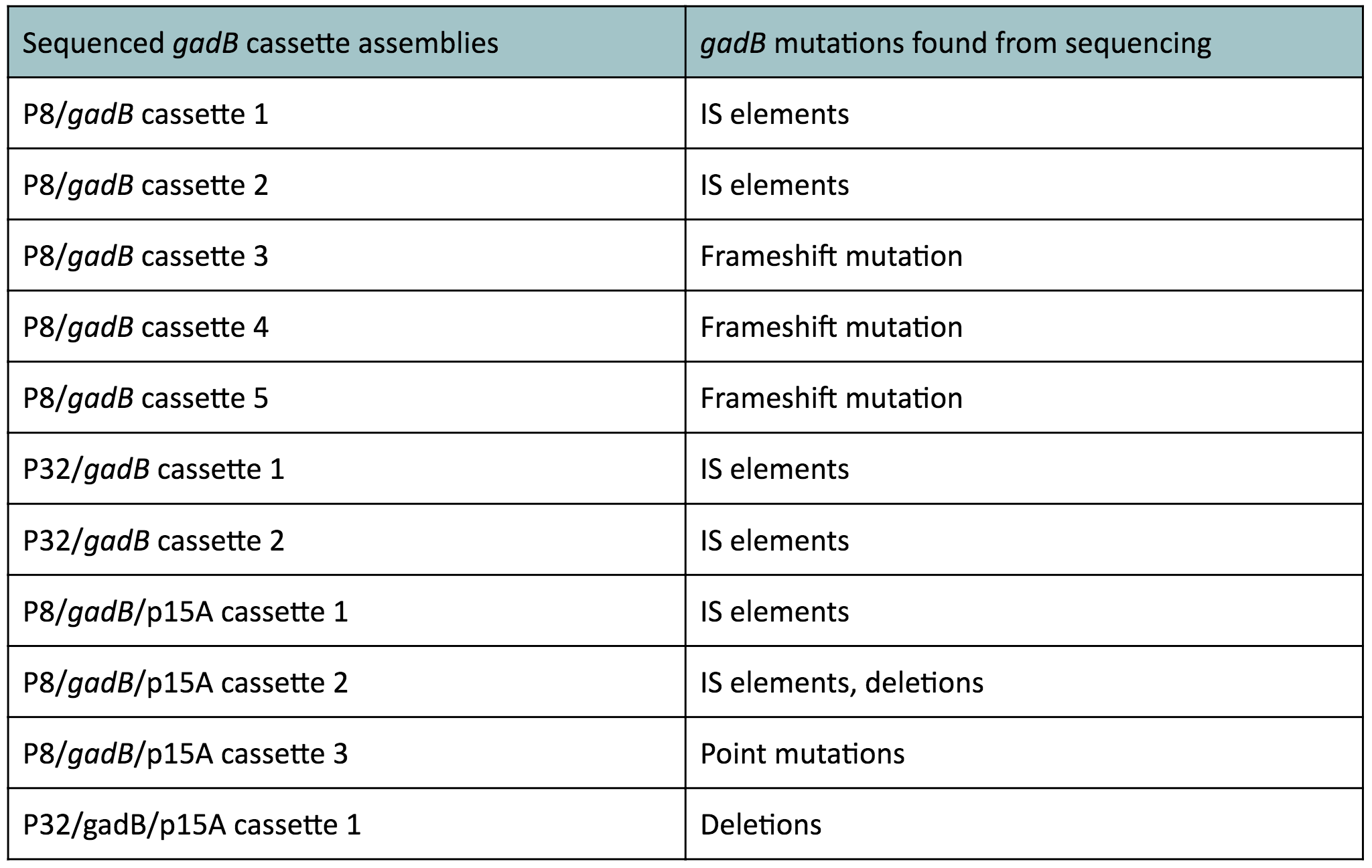| Line 17: | Line 17: | ||
<h2> Demonstrate </h2> | <h2> Demonstrate </h2> | ||
| − | <p> | + | <p> From our experiments attempting to increase <i>gadB</i> expression as a way to increase GABA production in bacteria, it was evident that constitutive expression of the <i>gadB</i> gene led to its rapid mutational degradation. The types of mutations observed in the <i>gadB</i> gene of our sequenced cassette plasmids are detailed in <b>Table 1</b> below. |
| − | + | It is most likely that our cassette transformants were able to overexpress <i>gadB</i> gene. However, <i>gadB</i> overexpression was metabolically-taxing to these cells, as the glutamate typically used for important cellular growth processes was being allocated towards GABA production, a that did not confer a selective advantage. Thus, as a way to reduce the metabolic load and gain a selective advantage, which was what we observed in the gadB genes of our sequenced cassette assemblies. | |
| + | however in subsequent generations containing mutations in gadB . | ||
| − | |||
Revision as of 07:31, 1 November 2017
Demonstrate
From our experiments attempting to increase gadB expression as a way to increase GABA production in bacteria, it was evident that constitutive expression of the gadB gene led to its rapid mutational degradation. The types of mutations observed in the gadB gene of our sequenced cassette plasmids are detailed in Table 1 below. It is most likely that our cassette transformants were able to overexpress gadB gene. However, gadB overexpression was metabolically-taxing to these cells, as the glutamate typically used for important cellular growth processes was being allocated towards GABA production, a that did not confer a selective advantage. Thus, as a way to reduce the metabolic load and gain a selective advantage, which was what we observed in the gadB genes of our sequenced cassette assemblies. however in subsequent generations containing mutations in gadB .
References
- Sleight, S. C. et al. Designing and engineering evolutionary robust genetic circuits. Journal of Biological Engineering. (4):12 (2010).


